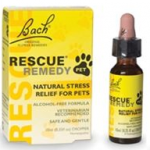
Cardiff 4th of July Hat Dress Flag
This article originally appeared on Dr Mahaney’s
The Daily Vet column on petMD.
The 4th of July is an all-American tradition celebrating our country’s independence, yet our pets don’t necessarily share the same patriotic perspective. The stressful stimuli to which our companion animals are exposed can motivate the canine or feline version of Independence Day as they attempt to escape from a scarily stimulating situation.
Although not all pets show a fearful response to fireworks, I don’t suggest exposing your dog or cat to the startlingly loud noises and bright lights associated with such displays. Even in the safe confines of your own home there exist occasions when your pet may seemingly be safe, yet still experience the terrifying sounds of "bombs bursting in air." With so many options for exposure to stressful circumstances, how does your by-standing canine or feline companion catch a break?
Reduce Your Pet's Firework Associated Stress
The stress caused by fireworks contributes to behaviors that may be unusual for your pet, including:
Attempts to escape
Cowering or hiding
Destroying household objects
Inappropriately urinating or defecating
Pacing
Panting
Salivating
Vocalizing
Do any of these sound familiar to you? To me, they individually and collectively are clinical signs associated with separation anxiety. To minimize your pet’s stressful experience, keep your animal companion at home instead of taking him along for the firework viewing experience.
To avoid stress from the noises and sounds of pyrotechnics lit in the proximity of your neighborhood, isolate pets inside your home to a quiet, cool, segregated area. Exterior sounds can be obscured by increasing the volume of your pet’s favorite television program (Animal Planet’s
My Cat from Hell, on which I provide holistic veterinary evaluations of some of Jackson Galaxy’s feline behavior projects, is a great choice) or playing calming music.
A size-appropriate crate can be used to confine your pet and prevent him from lunging at doors or windows and destroying or consuming household objects. Another option is to completely remove your pet form the situation by arranging for him to stay at a boarding facility or for a play date at a friend’s firework-free home.
Exercise Your Pet for Better Behavior
One of my favorite slogans is "a tired dog is a well behaved dog." Having an energetic dog has permitted me to see the merits that vigorous activity has on behavior. Using exercise to tire your pet out can positively direct energy so that the holiday celebratory experience is better tolerated.
Within 24 hours before the 4th of July event, exercise your pet by doing a familiar activity at an increased intensity and duration. Go for a longer walk, hike a steeper incline, throw the ball extra times, or swim additional laps. Adequately fatigued pets are more prone to resting and less likely to exhibit anxious behaviors during your celebration.
 Use Natural Products or Medications to Promote a Calm Energetic State in Your Pet
Use Natural Products or Medications to Promote a Calm Energetic State in Your Pet
Despite our efforts to provide a calm environment or exercise our pets into complacency, sometimes pet owners will still need to administer a sedative or stress relieving product.

An over the counter homeopathic, such as
Rescue Remedy Pet, is my first choice, as it promotes a calmer yet not overly sedated state. Many of my acupuncture patients receive it before treatment to promote better acceptance of needle insertion or laser application. A dose should be added to your pet’s water on the morning of the potentially distressing event. Follow up by applying drops directly onto your pet’s nose or into his mouth 1-2 hours before the start of the event.
If Rescue Remedy is insufficient for providing a calming effect, request a veterinary prescribed sedative or anxiety relieving medication. Acepromazine is a commonly used animal sedative, but it does not relieve anxiety. Alprazolam (Xanax) is both an anxiolytic (anti-anxiety) and mild sedative. Acepromazine and Alprazolam will exacerbate the sedation associated with narcotic pain relievers (Tramadol, Butorphanol, etc.) and antihistamines (Diphenhydramine HCl [Benadryl Allergy, etc.]).
Regardless of season or holiday, always seek your veterinarian’s guidance before administering any medications or supplements to your pet.
With any over the counter products or veterinary prescription medications you give to your pet, partake in a trial run at least once so that you can observe his response. Choose a time when you can closely monitor the effects of your chosen product and adjust the dosage as necessary to provide a desirable outcome.
*
Although I really enjoy the 4th of July, I think Cardiff and I are going to skip the fireworks celebration and focus on the healthy foods available at our backyard barbecue party.
To receive my next article via email, sign up
here.
Please feel free to communicate with me through Twitter (
@PatrickMahaney) and follow my adventures in veterinary medicine by liking
Patrick Mahaney: Veterinarian Acupuncture Pain Management for Your Pets on Facebook.
Copyright of this article (2012) is owned by Dr Patrick Mahaney, Veterinarian and Certified Veterinary Acupuncturist. Republishing any portion of this article must first be authorized by Dr Patrick Mahaney. Requests for republishing must be approved by Dr Patrick Mahaney and received in written format.
 Cardiff 4th of July Hat Dress Flag
This article originally appeared on Dr Mahaney’s The Daily Vet column on petMD.
The 4th of July is an all-American tradition celebrating our country’s independence, yet our pets don’t necessarily share the same patriotic perspective. The stressful stimuli to which our companion animals are exposed can motivate the canine or feline version of Independence Day as they attempt to escape from a scarily stimulating situation.
Although not all pets show a fearful response to fireworks, I don’t suggest exposing your dog or cat to the startlingly loud noises and bright lights associated with such displays. Even in the safe confines of your own home there exist occasions when your pet may seemingly be safe, yet still experience the terrifying sounds of "bombs bursting in air." With so many options for exposure to stressful circumstances, how does your by-standing canine or feline companion catch a break?
Reduce Your Pet's Firework Associated Stress
The stress caused by fireworks contributes to behaviors that may be unusual for your pet, including:
Attempts to escape
Cowering or hiding
Destroying household objects
Inappropriately urinating or defecating
Pacing
Panting
Salivating
Vocalizing
Do any of these sound familiar to you? To me, they individually and collectively are clinical signs associated with separation anxiety. To minimize your pet’s stressful experience, keep your animal companion at home instead of taking him along for the firework viewing experience.
To avoid stress from the noises and sounds of pyrotechnics lit in the proximity of your neighborhood, isolate pets inside your home to a quiet, cool, segregated area. Exterior sounds can be obscured by increasing the volume of your pet’s favorite television program (Animal Planet’s My Cat from Hell, on which I provide holistic veterinary evaluations of some of Jackson Galaxy’s feline behavior projects, is a great choice) or playing calming music.
A size-appropriate crate can be used to confine your pet and prevent him from lunging at doors or windows and destroying or consuming household objects. Another option is to completely remove your pet form the situation by arranging for him to stay at a boarding facility or for a play date at a friend’s firework-free home.
Exercise Your Pet for Better Behavior
One of my favorite slogans is "a tired dog is a well behaved dog." Having an energetic dog has permitted me to see the merits that vigorous activity has on behavior. Using exercise to tire your pet out can positively direct energy so that the holiday celebratory experience is better tolerated.
Within 24 hours before the 4th of July event, exercise your pet by doing a familiar activity at an increased intensity and duration. Go for a longer walk, hike a steeper incline, throw the ball extra times, or swim additional laps. Adequately fatigued pets are more prone to resting and less likely to exhibit anxious behaviors during your celebration.
Cardiff 4th of July Hat Dress Flag
This article originally appeared on Dr Mahaney’s The Daily Vet column on petMD.
The 4th of July is an all-American tradition celebrating our country’s independence, yet our pets don’t necessarily share the same patriotic perspective. The stressful stimuli to which our companion animals are exposed can motivate the canine or feline version of Independence Day as they attempt to escape from a scarily stimulating situation.
Although not all pets show a fearful response to fireworks, I don’t suggest exposing your dog or cat to the startlingly loud noises and bright lights associated with such displays. Even in the safe confines of your own home there exist occasions when your pet may seemingly be safe, yet still experience the terrifying sounds of "bombs bursting in air." With so many options for exposure to stressful circumstances, how does your by-standing canine or feline companion catch a break?
Reduce Your Pet's Firework Associated Stress
The stress caused by fireworks contributes to behaviors that may be unusual for your pet, including:
Attempts to escape
Cowering or hiding
Destroying household objects
Inappropriately urinating or defecating
Pacing
Panting
Salivating
Vocalizing
Do any of these sound familiar to you? To me, they individually and collectively are clinical signs associated with separation anxiety. To minimize your pet’s stressful experience, keep your animal companion at home instead of taking him along for the firework viewing experience.
To avoid stress from the noises and sounds of pyrotechnics lit in the proximity of your neighborhood, isolate pets inside your home to a quiet, cool, segregated area. Exterior sounds can be obscured by increasing the volume of your pet’s favorite television program (Animal Planet’s My Cat from Hell, on which I provide holistic veterinary evaluations of some of Jackson Galaxy’s feline behavior projects, is a great choice) or playing calming music.
A size-appropriate crate can be used to confine your pet and prevent him from lunging at doors or windows and destroying or consuming household objects. Another option is to completely remove your pet form the situation by arranging for him to stay at a boarding facility or for a play date at a friend’s firework-free home.
Exercise Your Pet for Better Behavior
One of my favorite slogans is "a tired dog is a well behaved dog." Having an energetic dog has permitted me to see the merits that vigorous activity has on behavior. Using exercise to tire your pet out can positively direct energy so that the holiday celebratory experience is better tolerated.
Within 24 hours before the 4th of July event, exercise your pet by doing a familiar activity at an increased intensity and duration. Go for a longer walk, hike a steeper incline, throw the ball extra times, or swim additional laps. Adequately fatigued pets are more prone to resting and less likely to exhibit anxious behaviors during your celebration.
 Use Natural Products or Medications to Promote a Calm Energetic State in Your Pet
Despite our efforts to provide a calm environment or exercise our pets into complacency, sometimes pet owners will still need to administer a sedative or stress relieving product.
Use Natural Products or Medications to Promote a Calm Energetic State in Your Pet
Despite our efforts to provide a calm environment or exercise our pets into complacency, sometimes pet owners will still need to administer a sedative or stress relieving product. An over the counter homeopathic, such as Rescue Remedy Pet, is my first choice, as it promotes a calmer yet not overly sedated state. Many of my acupuncture patients receive it before treatment to promote better acceptance of needle insertion or laser application. A dose should be added to your pet’s water on the morning of the potentially distressing event. Follow up by applying drops directly onto your pet’s nose or into his mouth 1-2 hours before the start of the event.
If Rescue Remedy is insufficient for providing a calming effect, request a veterinary prescribed sedative or anxiety relieving medication. Acepromazine is a commonly used animal sedative, but it does not relieve anxiety. Alprazolam (Xanax) is both an anxiolytic (anti-anxiety) and mild sedative. Acepromazine and Alprazolam will exacerbate the sedation associated with narcotic pain relievers (Tramadol, Butorphanol, etc.) and antihistamines (Diphenhydramine HCl [Benadryl Allergy, etc.]).
Regardless of season or holiday, always seek your veterinarian’s guidance before administering any medications or supplements to your pet.
With any over the counter products or veterinary prescription medications you give to your pet, partake in a trial run at least once so that you can observe his response. Choose a time when you can closely monitor the effects of your chosen product and adjust the dosage as necessary to provide a desirable outcome.
*
Although I really enjoy the 4th of July, I think Cardiff and I are going to skip the fireworks celebration and focus on the healthy foods available at our backyard barbecue party.
To receive my next article via email, sign up here.
Please feel free to communicate with me through Twitter (@PatrickMahaney) and follow my adventures in veterinary medicine by liking Patrick Mahaney: Veterinarian Acupuncture Pain Management for Your Pets on Facebook.
Copyright of this article (2012) is owned by Dr Patrick Mahaney, Veterinarian and Certified Veterinary Acupuncturist. Republishing any portion of this article must first be authorized by Dr Patrick Mahaney. Requests for republishing must be approved by Dr Patrick Mahaney and received in written format.
An over the counter homeopathic, such as Rescue Remedy Pet, is my first choice, as it promotes a calmer yet not overly sedated state. Many of my acupuncture patients receive it before treatment to promote better acceptance of needle insertion or laser application. A dose should be added to your pet’s water on the morning of the potentially distressing event. Follow up by applying drops directly onto your pet’s nose or into his mouth 1-2 hours before the start of the event.
If Rescue Remedy is insufficient for providing a calming effect, request a veterinary prescribed sedative or anxiety relieving medication. Acepromazine is a commonly used animal sedative, but it does not relieve anxiety. Alprazolam (Xanax) is both an anxiolytic (anti-anxiety) and mild sedative. Acepromazine and Alprazolam will exacerbate the sedation associated with narcotic pain relievers (Tramadol, Butorphanol, etc.) and antihistamines (Diphenhydramine HCl [Benadryl Allergy, etc.]).
Regardless of season or holiday, always seek your veterinarian’s guidance before administering any medications or supplements to your pet.
With any over the counter products or veterinary prescription medications you give to your pet, partake in a trial run at least once so that you can observe his response. Choose a time when you can closely monitor the effects of your chosen product and adjust the dosage as necessary to provide a desirable outcome.
*
Although I really enjoy the 4th of July, I think Cardiff and I are going to skip the fireworks celebration and focus on the healthy foods available at our backyard barbecue party.
To receive my next article via email, sign up here.
Please feel free to communicate with me through Twitter (@PatrickMahaney) and follow my adventures in veterinary medicine by liking Patrick Mahaney: Veterinarian Acupuncture Pain Management for Your Pets on Facebook.
Copyright of this article (2012) is owned by Dr Patrick Mahaney, Veterinarian and Certified Veterinary Acupuncturist. Republishing any portion of this article must first be authorized by Dr Patrick Mahaney. Requests for republishing must be approved by Dr Patrick Mahaney and received in written format.